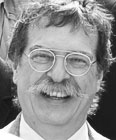
Neurologe und Ayurveda-Arzt
Dr. med. Antonio Morandi ist Neurologe und Vaidya (Ayurveda Academy, Pune (Indien) / Joytinat International College of Ayurveda). Außerdem hat er eine Spezialisierung in der ayurvedischen Panchakarma-Therapie ((Ayurvedic
Institute Ashtavaidyan Thaikat Mooss’,Thrissur). Er steht dem Ayurvedic Point, Mailand, seit vielen Jahren als Direktor vor und ist Präsident der Wissenschaftlichen Gesellschaft für Ayurveda Medizin Italien (SSIMA). In 2017 wurde er mit dem renommierten IASTAM ZANDU Award for Research in Ayurveda ausgezeichnet. 2019 erhielt der als Co-Autor den ECIM Award für die beste klinische Publikation.
Im Angesicht der langen Tradition des Ayurveda erscheinen 30 Jahre als kurzer Abschnitt. Doch hat der Ayurveda in dieser Zeit einen großen Schritt nach Europa gemacht, nicht zuletzt durch das Symposium und den Pioniergeist von Kerstin und Mark Rosenberg, die im Jahre 1993 die Europäische Akademie für Ayurveda gegründet haben.
Das Projekt „Ayurveda in Deutschland“ ist mit viel Elan gestartet und wichtige Meilensteile sind erreicht, dank der unermütlichen Tatkraft aller Mitwirkenden. In dieser Session plaudern liebgewonnene Weggefährten, Unterstützer und Freunde der Akademie über Anekdoten aus 30 Jahren und wagen einen Ausblick auf die kommenden 3 Jahrzehnte.
Die Entwicklung des Āyurveda als wissenschaftliche Disziplin bringt einzigartige Herausforderungen und Chancen mit sich. Das Konzept der Zusammenarbeit von Medizin und Wissenschaft (Collaborative Medicine and Science, CoMS) stellt einen bahnbrechenden Ansatz zur Überbrückung der Kluft zwischen traditionellen ayurvedischen Praktiken und modernen wissenschaftlichen Methoden dar. Dieser Vortrag untersucht die Integration des Ayurveda in die heutige medizinische Landschaft und betont die Notwendigkeit von Zusammenarbeit, strenger Forschung und interdisziplinärem Engagement.
Im Mittelpunkt des CoMS-Konzepts steht das Verständnis, dass der Āyurveda eine ganzheitliche, individualisierte Perspektive auf Gesundheit und Wohlbefinden bietet. Durch die Prinzipien von Pañcamahābhūta, Doṣa und Prakṛti bietet der Āyurveda Erkenntnisse, die die moderne Pharmakologie und personalisierte Medizin ergänzen und verbessern können. Die Umsetzung dieser Prinzipien in die Praxis des modernen Gesundheitswesens erfordert jedoch systematische Forschung, Validierung und Zusammenarbeit zwischen verschiedenen wissenschaftlichen Bereichen.
Die Herausforderungen liegen in der Entwicklung standardisierter Methoden, der Schaffung zuverlässiger Bewertungsinstrumente und der Förderung der interdisziplinären Zusammenarbeit, um die Kompatibilität und Integration ayurvedischer Prinzipien mit modernen wissenschaftlichen Paradigmen zu gewährleisten. Das CoMS-Konzept unterstreicht die Notwendigkeit einer konzertierten Anstrengung von Forschern, Praktikern und politischen Entscheidungsträgern, um gemeinsame Rahmenbedingungen, Protokolle und Bewertungskriterien zu schaffen.
Zusammenfassend lässt sich sagen, dass das CoMS-Konzept einen vielversprechenden Weg zur Integration des Ayurveda in die moderne Medizin darstellt. Es erfordert ein kollektives Unterfangen, das den Reichtum der ayurvedischen Weisheit aufgreift und gleichzeitig wissenschaftliche Strenge und kooperative Forschung beachtet. Das Ergebnis könnte zu wirksameren, personalisierten Behandlungen führen und neue Wege für das Verständnis, die Erforschung und die Anwendung traditioneller und moderner therapeutischer Ansätze eröffnen.
Die Entwicklung des Āyurveda als wissenschaftliche Disziplin bringt einzigartige Herausforderungen und Chancen mit sich. Das Konzept der Zusammenarbeit von Medizin und Wissenschaft (Collaborative Medicine and Science, CoMS) stellt einen bahnbrechenden Ansatz zur Überbrückung der Kluft zwischen traditionellen ayurvedischen Praktiken und modernen wissenschaftlichen Methoden dar. Dieser Vortrag untersucht die Integration des Ayurveda in die heutige medizinische Landschaft und betont die Notwendigkeit von Zusammenarbeit, strenger Forschung und interdisziplinärem Engagement.
Im Mittelpunkt des CoMS-Konzepts steht das Verständnis, dass der Āyurveda eine ganzheitliche, individualisierte Perspektive auf Gesundheit und Wohlbefinden bietet. Durch die Prinzipien von Pañcamahābhūta, Doṣa und Prakṛti bietet der Āyurveda Erkenntnisse, die die moderne Pharmakologie und personalisierte Medizin ergänzen und verbessern können. Die Umsetzung dieser Grundsätze in die Praxis des modernen Gesundheitswesens erfordert jedoch systematische Forschung, Validierung und Zusammenarbeit zwischen verschiedenen wissenschaftlichen Bereichen.
Die Herausforderungen liegen in der Entwicklung standardisierter Methoden, der Schaffung zuverlässiger Bewertungsinstrumente und der Förderung der interdisziplinären Zusammenarbeit, um die Kompatibilität und Integration ayurvedischer Prinzipien mit modernen wissenschaftlichen Paradigmen zu gewährleisten. Das CoMS-Konzept unterstreicht die Notwendigkeit einer konzertierten Anstrengung von Forschern, Praktikern und politischen Entscheidungsträgern, um gemeinsame Rahmenbedingungen, Protokolle und Bewertungskriterien zu schaffen.
Zusammenfassend lässt sich sagen, dass das CoMS-Konzept einen vielversprechenden Weg zur Integration des Ayurveda in die moderne Medizin darstellt. Es erfordert ein kollektives Unterfangen, das den Reichtum der ayurvedischen Weisheit aufgreift und gleichzeitig wissenschaftliche Strenge und kooperative Forschung beachtet. Das Ergebnis könnte zu wirksameren, personalisierten Behandlungen führen und neue Wege für das Verständnis, die Erforschung und die Anwendung traditioneller und moderner therapeutischer Ansätze eröffnen.
Die multidimensionale Art der therapeutischen Intervention im Ayurveda ergibt sich aus seinem besonderen Verständnis der Beziehung zwischen Körper und Geist. Jede Therapie wirkt auf körperlicher, geistiger und emotionaler Ebene, und die Behandlung bezieht sich auf das gesamte Körper-Geist-Seele-System. Die therapeutische Raffinesse des Ayurveda erlaubt es, die Wirkung je nach den Bedürfnissen des einzelnen Patienten auf einer bestimmten Ebene zu modulieren. Von besonderer Bedeutung und in der praktischen Anwendung sehr speziell sind jedoch die Therapien, die sich rein psychologischen, mentalen und auch spirituellen Störungen widmen. In diesem Expertengespräch werden einige der einzigartigeren Aspekte der ayurvedischen Therapie für dysfunktionale Probleme der Psyche und des Geistes untersucht.
Dr. Ram P. Manohar wird die Gründungsprinzipien und aktuellen Praktiken der Daivavyapāśraya Cikitsā erläutern, der so genannten göttlichen Therapie und einer der von Caraka beschriebenen Therapiemodalitäten, die besondere Interventionsmodalitäten zur Heilung psychischer und geistiger Störungen einsetzt. Stephanie Bunk wird über die Beziehung zwischen Ayurveda, Yoga und meditativen Praktiken bei der Bewältigung psychischer Probleme sprechen, während Dr. Antonio Morandi die psychologischen und mentalen Auswirkungen körperlicher Behandlungen im Ayurveda und ihr Potenzial bei der Aufarbeitung emotionaler und traumatischer Informationen erörtern wird.
According to the Vedic concept, the Universe is formed by five elements or states of matter that derive from the primordial imbalance in the form of OM sound. Sound is the primordial energy that is organized in the forms of concrete reality.
Sanskrit is the language that expresses this vibrational code with its sounds and is therefore intrinsically linked to the structure of reality. The relationship between sound, words and the associated elements of reality define the structure of thought and is a concept widely explored in all cultures. The work of the grammarian Bhartrhari in ancient India and that of linguists Edward Sapir and Benjamin Whorf in the contemporary world bear witness to this. Modern scientific studies unequivocally demonstrate the reality of their hypotheses and place Sanskrit as a language capable of shaping modern conceptual patterns towards an expanded perception of reality.
Ayurvedic perspective of microcirculation
Dr. med. Antonio Morandi
The function of blood and its flow were well-known to the ancient ayurvedic Ṛṣi well before Harvey’s demonstration in 1628. The blood flow and the pumping function of the heart are clearly mentioned both in the Atharva Veda, one of the four Vedas, and in the main classical Ayurvedic texts. The word itself „Hṛdaya“, which in Sanskrit defines the heart, has an etymology that clearly describes its function. Hṛ, in fact, derives from Harati meaning “to receive“, Da comes from Dadāti meaning “to give“, while Yā means “to move“, “to go“ “circular movement“, thus defining as a whole the function of heart as a pump that can give, receive and circulate blood. Caraka described the general organization of the cardiovascular system by specifying the importance of the heart and how it pumped the nutrient fluids into all body parts. In yurveda what we modernly call blood is actually described as the set of four components needed for life or: Rasa, fluid that results from complete digestion and absorption of food, Rakta, which derives from the elaboration of Rasa and represents the red and corpuscular part of the blood whose state is closely related to health and life (the modern description of Anemia can be found in yurveda in the condition called Pāṇḍu), and Ojas whose function is closely associated with the concept of immunity and Prāṇa which includes elements derived from breathing. It is really amazing to observe how this description corresponds to the functional aspects that are modernly attributed to the blood.
Due to its profound knowledge of the cardiovascular system, Ayurveda gives the same importance to Microcirculation as Modern Medicine does, although everything is observed from a wider and articulated perspective, as its holistic vision does not limit the attention to the single organ microcirculation. The description that ancient ayurvedic texts report of exchanges at thinner levels of blood circulation is of great interest for surprising detail and conceptual modernity. Both Suśruta and Vāgbhata describe how vases become porous as they become thinner and pervade the whole body. Caraka had already described the srotamsi system as channels from which and exudation happens and that the phenomenon is bi-directional, providing nourishment and removing wastes.
It thus appears clear how the knowledge of anatomical and functional cardio circulatory aspects, of the importance of blood, blood circulation and vascular network were clearly present in Ayurveda from the earliest times. Of course, this physiological knowledge also corresponds to a profound understanding of its pathologies.
Although the Ayurvedic and the modern knowledge systems are undoubtedly different and seemingly far apart, however, they are only different perspectives of a single reality. In fact, a careful analysis and proper contextualization and the subsequent „conceptual translation“ of the two systems will make it possible to highlight important similarities and convergences that will allow subsequent elaboration. It is important therefore that there be the real possibility of an evolutionary, equal, and without prejudice dialogue between such diverse epistemologies, because only this will allow the emergence of an unpredictable and superior cultural and scientific paradigm that will lead to a new vision of reality.
One of the most obvious differences between Āyurveda and Modern Medicine concerns the anatomical description of the human body. Modern Medicine meticulously describes the shape of the body and its constituents, dividing it ideally into systems, organs and tissues, parts to which it then attributes specific functions. On the contrary, Āyurveda describes the functioning of the organism as a whole and it is described only when the function is intimately connected with the expression of a form, see for example the description of the skin or the development of the embryo. This difference is one of the expressions of the diverging representation of the world and consequent diverse epistemology to which the two systems of thought refer. This is why there is no trace in the ayurvedic classical texts of anatomical descriptions of the thyroid gland. The function attributed by Modern Medicine to the thyroid is, according to the functional vision of Āyurveda, that of Agni in its various forms. The concept of Agni is very broad and determines in a profound way not only the functioning of the whole organism but the persistence of life itself. Modern medicine tends to compartmentalize functions according to organs or systems and does not make a general relation, this is particularly limiting especially when analyzing the metabolism which is the basic function of life itself. Āyurveda, on the other hand, implements a transversal vision and functionally binds all organs and systems in a network, highlighting their interrelationships and Interdependencies. The analysis according to the criteria of the Collaborative Medicine and Science Co.M.S. of the various functional modalities of Agni in relation to Modern Medicine can offer the latter valuable elements to better understand the general metabolic models and in particular, those related to the thyroid gland and suggest new therapeutic strategies.
Newsletter
* Ich habe die Datenschutzerklärung zur Kenntnis genommen. Ich stimme zu, dass meine Angaben und Daten zur Beantwortung meiner Anfrage elektronisch erhoben und gespeichert werden.

2024 © Rosenberg Ayurveda Akademie gGmbH